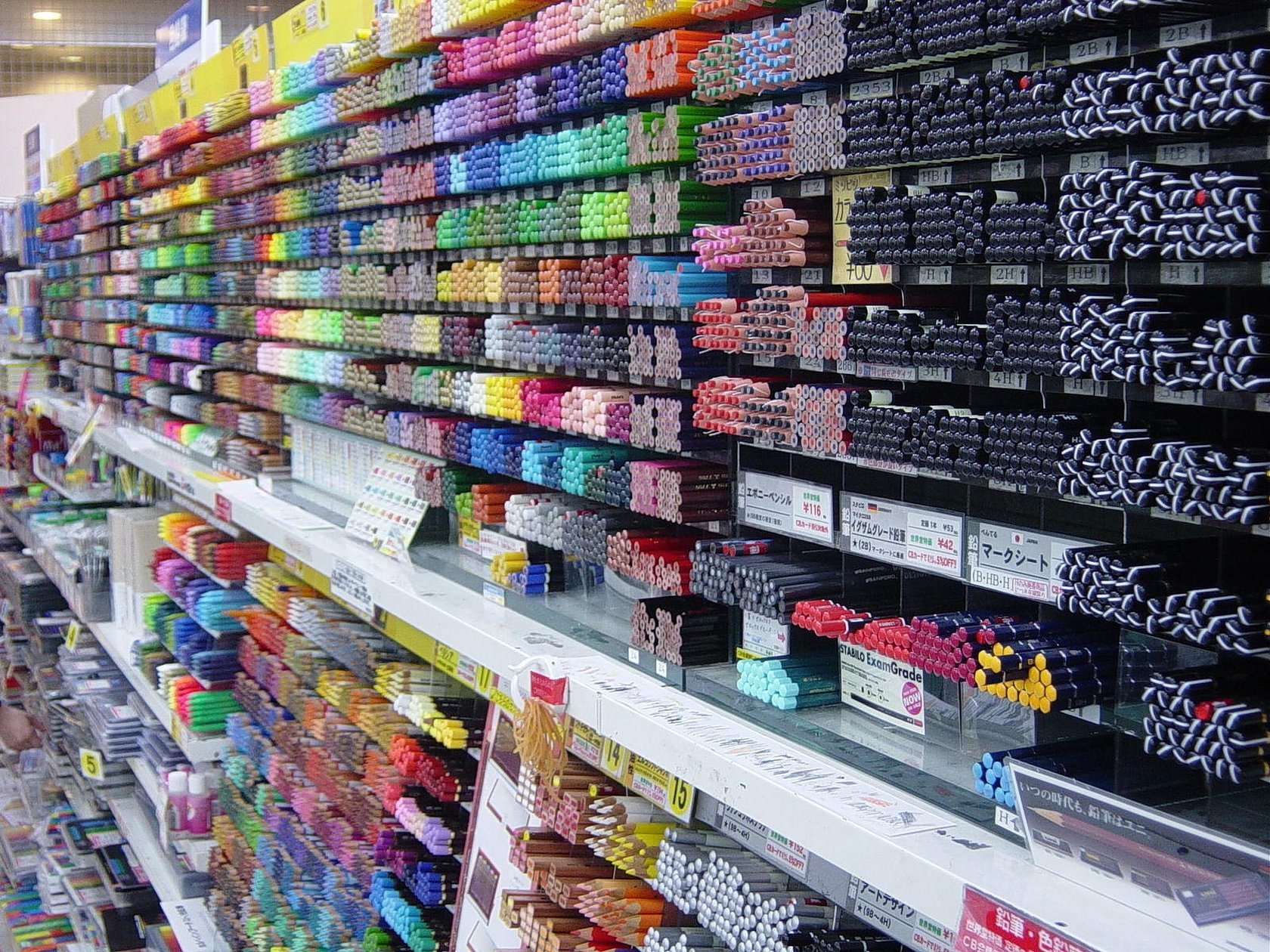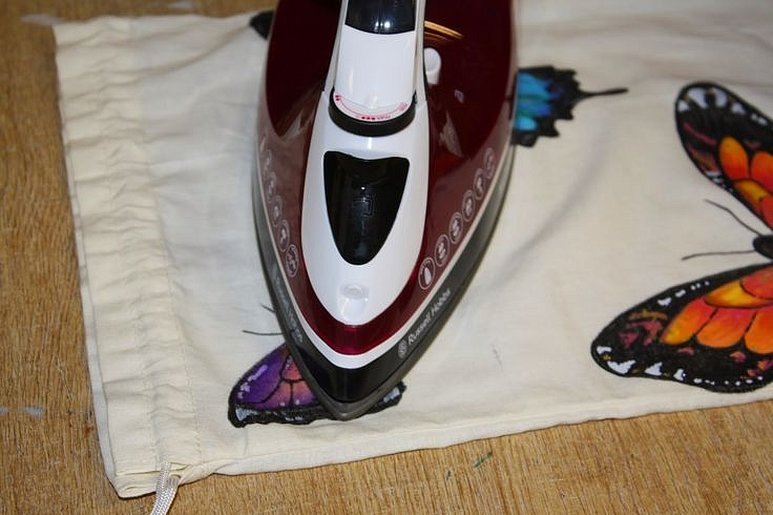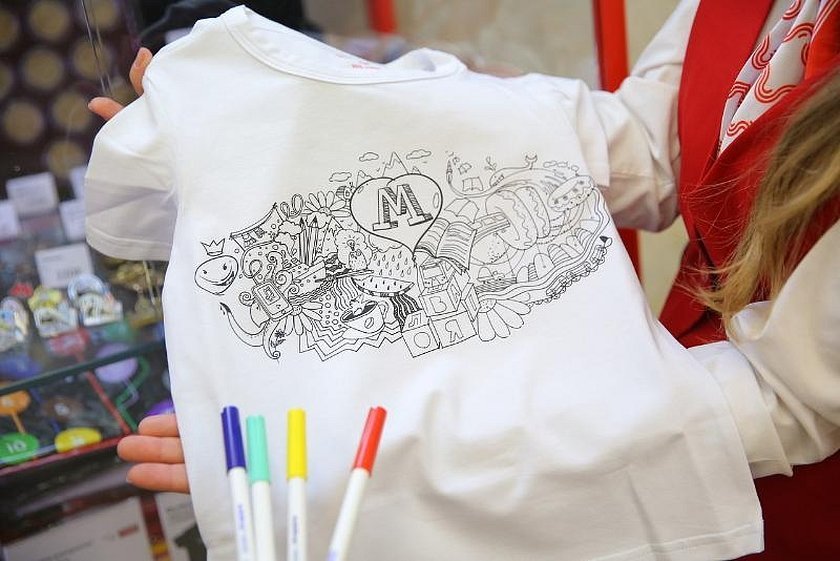In craft stores you can see markers for drawing on fabric. There are quite a lot of them, and working with them is actually not that difficult, you just need to remember some rules of use.
Advantage of using
In creativity, markers or felt-tip pens for fabric are used quite often, this method of transforming clothes is quite popular. There is also another way - using acrylic paints for painting on fabric, but this is a little more complicated and requires certain skills.
To start working on creating a unique item, you will only need a plain T-shirt and the dyes themselves. They can be purchased both in online stores and in nearby art shops.

Fabric markers have a lot of advantages that make them popular among creative people:
- They allow you not only to create an interesting item, but also to play up ingrained stains on clothes, creating a beautiful pattern on the damaged area.
- Indelible markers do not smudge the outlines.
- The lines are thin and clear.
- They dry quickly.
- They have no smell.
- Can be combined with acrylic paints and other art materials for fabric.
- Allows you to express your feelings and mood on fabric.
Fabric markers are permanent. This means that the design they apply will be fixed on the fabric and will not wash off after washing. But it is worth remembering that washing should be done delicately, at a temperature of 40-60 degrees.

You can apply a drawing or inscription to cotton, denim, linen and other fabrics. However, when buying, you need to look carefully at the packaging: some markers are intended for a certain type of fabric. The markings may contain such notes as "for dark fabrics", "thin materials", "covering", etc. You can also find felt-tip pens with different effects, for example, velvet or luminescent.
Please note! Textile markers are suitable for creativity with children.

Types and purpose
In art stores you can find many different types of textile dyes. They differ not only in the variety of colors and effects, but also in the purpose and nature of application. The characteristics of certain dyes are described on the packaging.
Markers are used in different areas: they are used in sewing, when embroidering patterns. They simplify the work somewhat, they can be used to mark the stitching location or sketch a complex pattern, which can then be washed off. Depending on the thickness, they can be used to draw various large drawings or to detail the picture.

Disappearing marker
For some types of work, you may need a marker with the ability to disappear after a while. These can actually be found in craft stores, they are called "self-disappearing markers."
As a rule, such dyes disappear after exposure of the drawing to hot steam or water.
This really simplifies the work somewhat: after application, you don't have to worry about how to wash the fabric. The pattern will disappear on its own, without any additional effort. They can also come across with a slightly different effect. They disappear as before easily and without a trace, but reappear after ironing. Cooling of the fabric again caused the disappearance of the inscriptions or pattern.

Another property of the dye can be found: after application, it does not appear immediately, but only after a little time. In this regard, problems arise when it is necessary to draw another line, and the first one has not yet appeared.
Erasable markers come in a variety of colors. The most commonly used colors in needlework are black, white, and red. They are used for fabrics of different thicknesses and colors, but red is still better for light-colored fabrics, as is black.
Before you start working, it's worth taking a little time to check the compatibility of markers and fabric. For example, drawing on materials such as silk is quite problematic.
If lines are visible on the canvas and need to be removed, the following tools can help:
- White spirit and a toothbrush.
- Ammonia soap solution (10%).
When cleaning, you need to be careful, as the products can harm not only the fabric, but also the body.
Washable marker
These are used much less often. Not everyone likes it, because after applying the lines, the sewn item needs to be washed. Washing a newly sewn item spoils its appearance somewhat, so this type is not often used when sewing. In order to wash off the lines, you need to wet the entire product, processing individual areas can leave a noticeable stain, which will then take some effort to disappear. This will be especially noticeable on silk fabrics.

Therefore, before using it is recommended to test the markers on a small piece of fabric. If it comes off easily, you can try it on the item itself.
Please note! A stain from a washable marker can be removed with a slightly damp cloth and a hair dryer.
Permanent marker
Permanent fabric dyes will be useful:
- To create original logos on clothing.
- For painting on fabric.

With permanent textile markers, you can create a clear and indelible drawing that will not leave streaks or stains. Felt-tip pens are suitable for working with different fabrics: from synthetic to natural. In sets (or individually) in art stores, you can find coloring materials of different thicknesses - this allows you to draw lines of different thicknesses. Thick markers can be used to depict some general details or to make an outline, thin ones - to detail the picture.

Fabric marker (indelible) has many advantages in creating unique things, except that after applying the lines remain clear and do not blur. There are markers of different colors on sale, they give a rich and clear color (provided that the product is of high quality), are applied evenly. The clarity of the line ensures their quick drying. However, if you need to correct something, the time until the drawing dries completely is enough to remove the stain - this is done with simple cold water.
In art shops, prices for markers can range from 70 to 600 rubles - the price depends on the number of pieces in the set and the quality of the dyes.*
Acrylic markers
Acrylic markers are suitable for working on fabric, drawing graffiti, and other work on any surface. They are somewhat similar to permanent markers.
- The dye application is covering. The paint does not show through.
- You can paint with them in the same way as with regular paints. While the drawing is not dry, it is convenient to make interesting transitions and mix colors.
- After drying, the paint forms a film. It is not washed off with water.
- You can work with such dyes not only on fabric.
These markers are a godsend for those who have long wanted to try painting with acrylic paints, but without the hassle of brushes, palettes, jars and solvents. This option is suitable for children's creativity, but you need to carefully monitor the cleanliness of your hands and not allow the dye to get on clean clothes - it is quite difficult to wash off quick-drying acrylic.

Subtleties of work
When working with different markers, there are some features to consider. How to use fabric markers (permanent or erasable) may be indicated in the instructions on the packaging.
However, some subtleties are still worth noting.
- Some dyes can soak into the fabric, so it is best to place cardboard or thick paper underneath the layer to avoid staining the item.
- When buying, it is worth paying attention to the markers themselves: sometimes they come with a special eraser that allows you to remove unnecessary lines. It is also possible to purchase a corrector for bringing the markers together.
- It is better not to leave washable markers on the fabric for a long time, if, for example, a large and complex work is planned. The paint will eventually eat into the material, and it will be difficult to wash it off. For long-term work, it is better to use a disappearing marker.
- Some markers do not dry on their own. To fix them, use an iron without steam, which is used to iron the product from the reverse side.
- Items with a design applied with a permanent marker are washed in cool water (40-50 degrees) with a powder without a bleaching effect.
- It is important not to leave markers without caps.
- In order to check the color and the nature of the marker application, it is recommended to first use a small unnecessary piece of fabric.
Please note! Using fabric markers, you can not only make the sewing process easier, but also create a unique item. The main thing when working with such materials is to remember their features and be careful.




